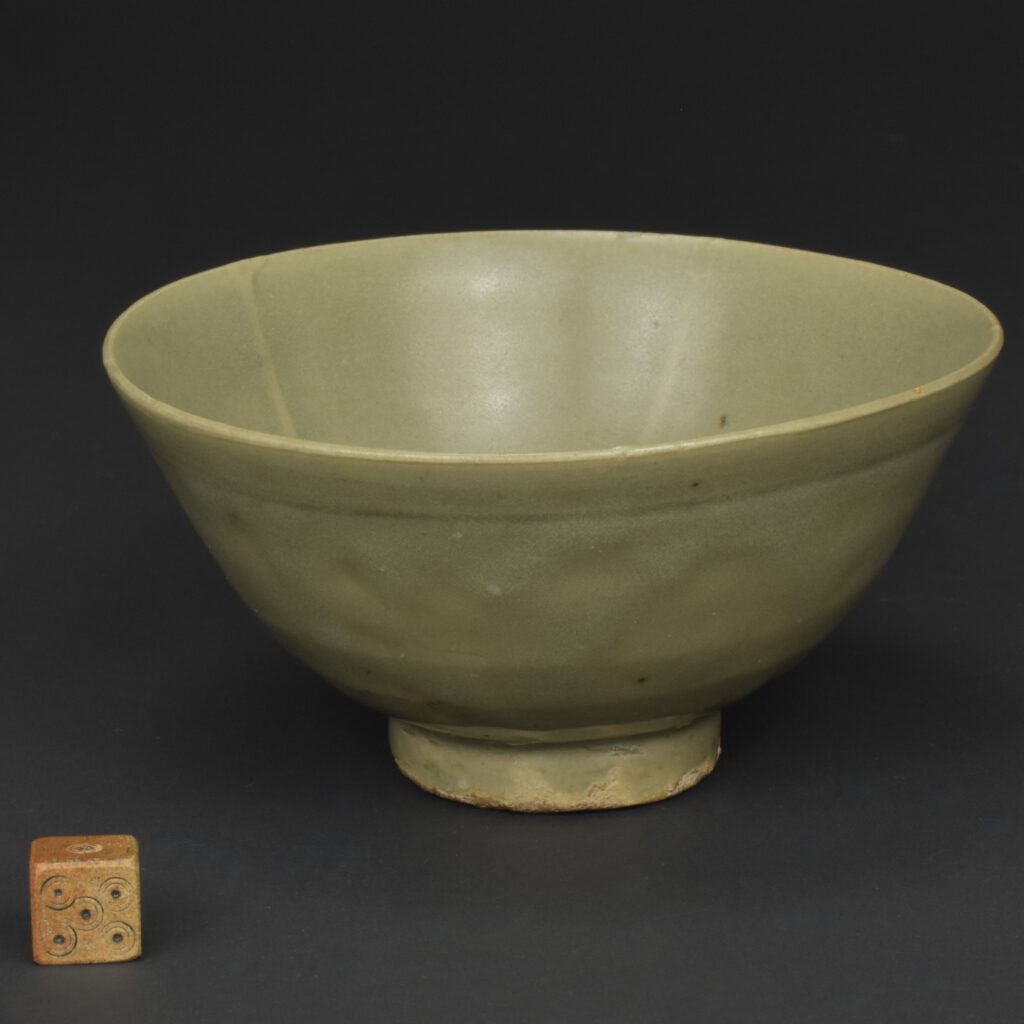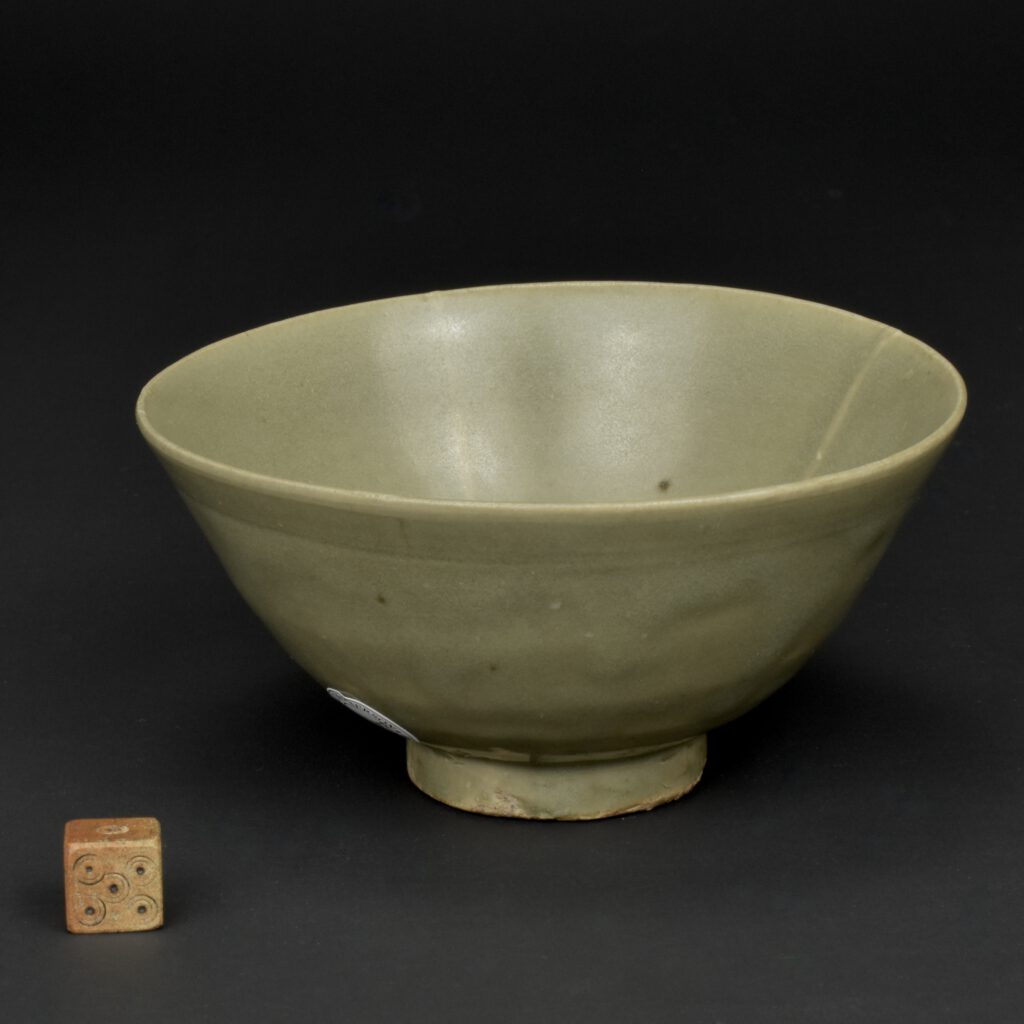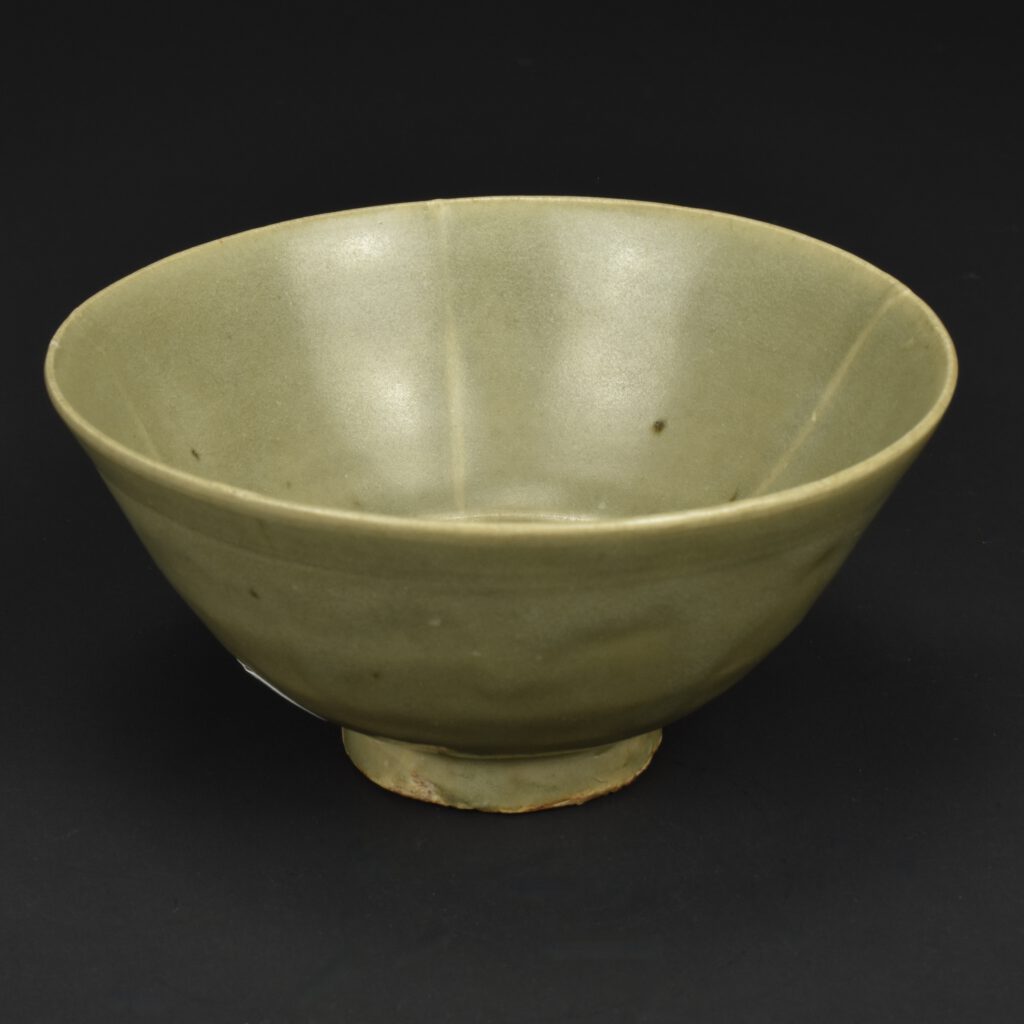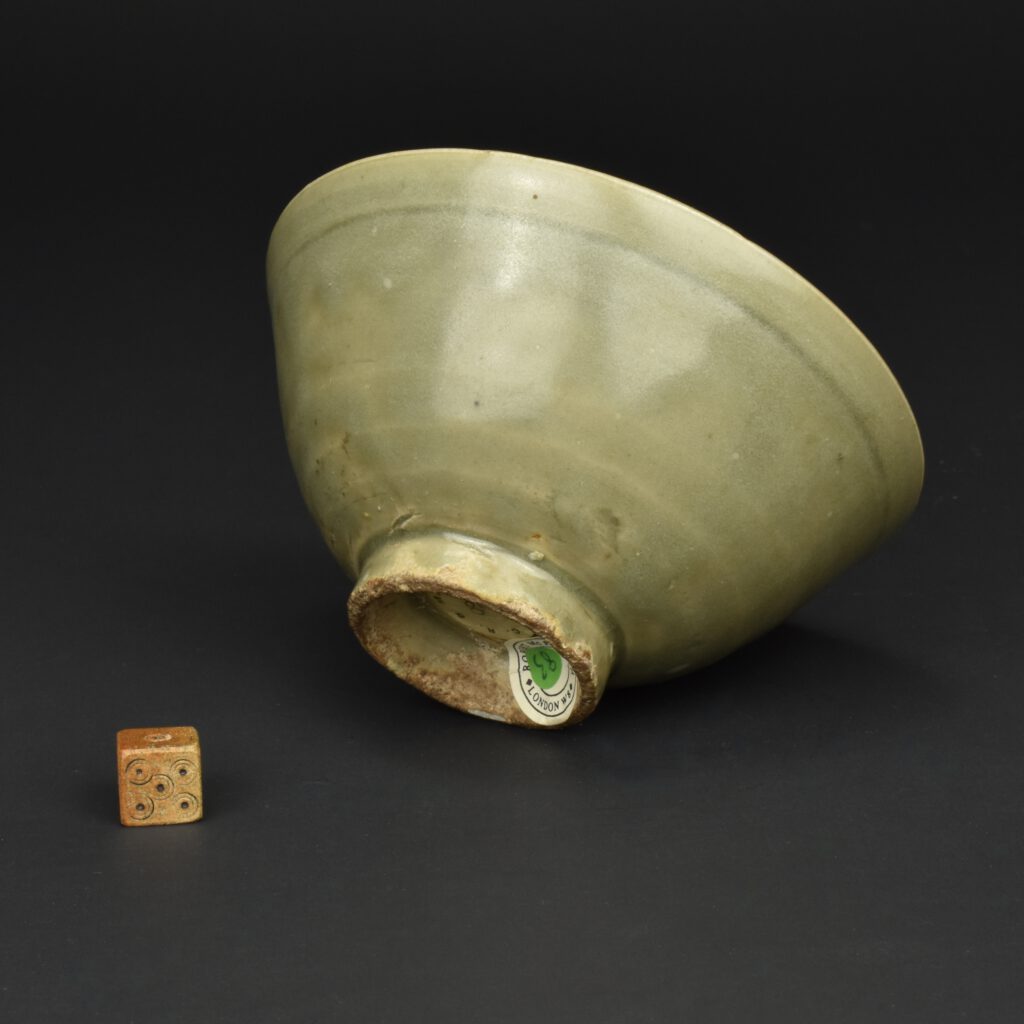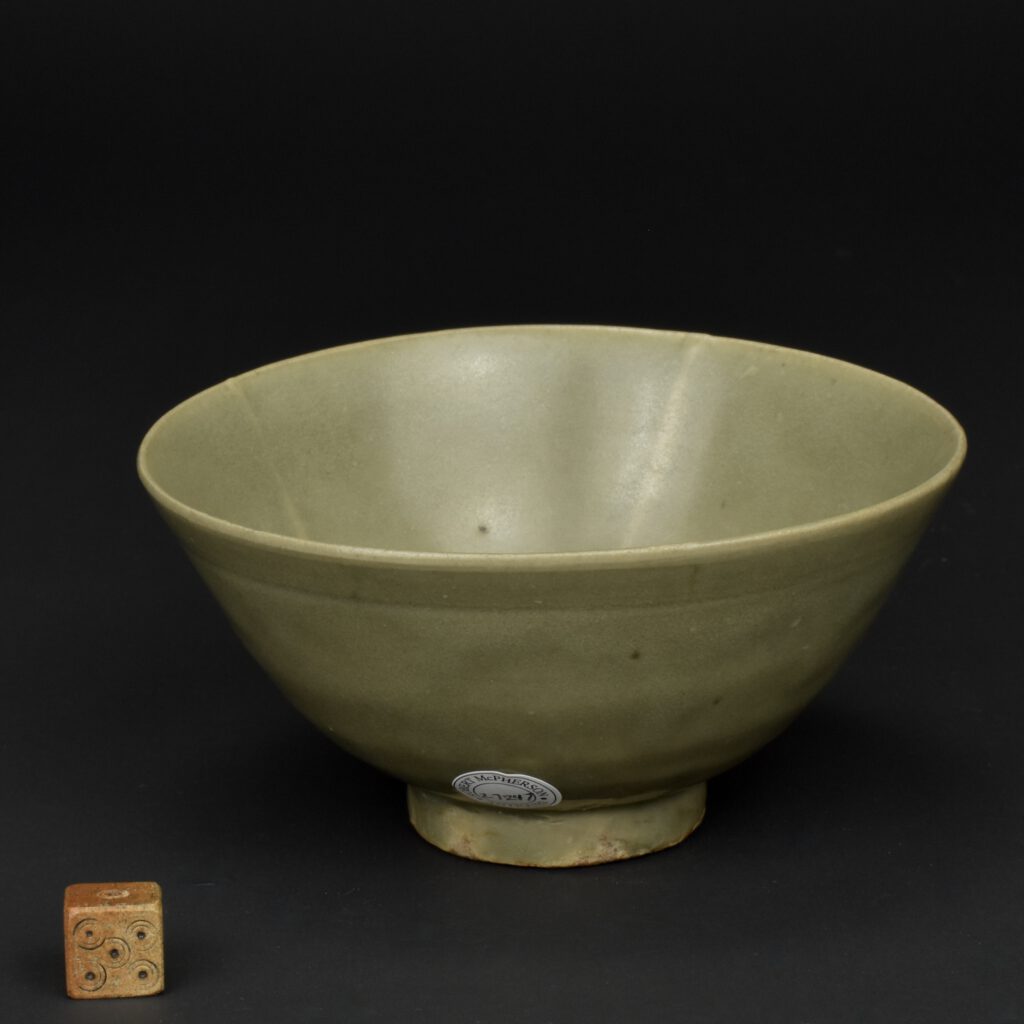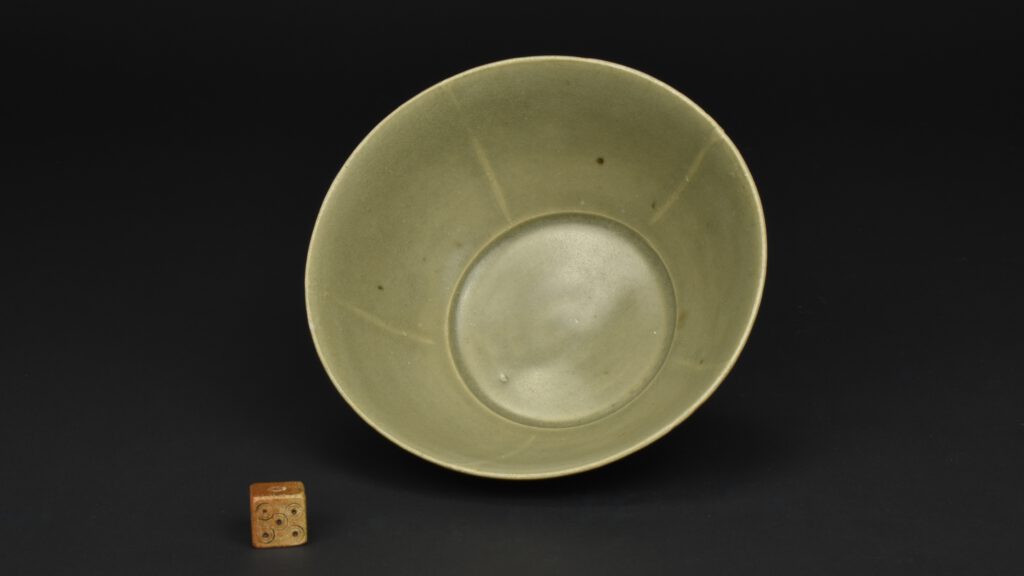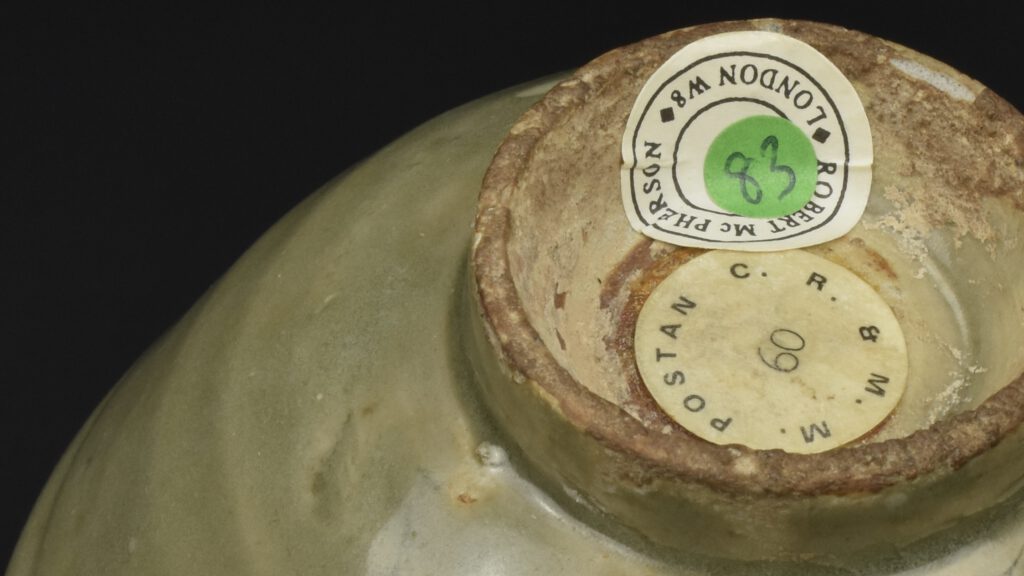
Northern Song or Jin Yaozhou Celadon Bowl from the Collection of Sir Michael Moissey (1899-1981)
A Celadon Bowl from the Yaozhou Kilns in Shaanxi or Henan Province, Northern Song (960 – 1127) or Jin dynasty (1115 – 1234). This bowl was thrown on a wheel over what is referred to as a hump mould. The moulds were made of very hard stoneware with a sharply carved design, see below for two examples, one in the British Museum and one in the Metropolitan Museum of Art. The present bowl has a very simple design of five raised ribs which are rather unevenly placed around a sunken well. Excess clay has been squeezed out of some of the ribs, the potter has tried to even them out where the ribs meet the rim. This bowl is rather light and sits on a high tapering foot. As is common with Yaozhou ware there are finger nail impressions around the lower part of the bowl, they are frozen, unchanged for nearly a thousand years. Sir Michael Moissey (1899-1981) C. R. & M. M. Postan collection, number 60 (label to base). Sir Michael Moissey was born in Tighina which is now in Moldova, he arrived in Britain in 1920 and became a British citizen in 1926. He became Professor of Economic History at Cambridge in 1938. He was a client of Bluett’s from 1956. In 1972 the firm offered the Postan’s collection for sale, comprising mostly ceramics of the Song dynasty, with the catalogue entitled Early Chinese Ceramics from the Postan Collection. Information from Provenance, Collectors, Dealers & Scholars : Chinese Ceramics in Britain & America (Roy Davids, Dominic Jellinek, Privately Printed, 2011. ISBN 978-0-9570148-0-0).
See Below For More Photographs and Information.
SOLD
- Condition
- In very good condition, one very small glaze frit.
- Size
- Diameter 11.1 cm (4 1/3 inches).
- Provenance
- Sir Michael Moissey (1899-1981) C. R. & M. M. Postan collection, number 60 (label to base). Sir Michael Moissey was born in Tighina which is now in Moldova, he arrived in Britain in 1920 and became a British citizen in 1926. He became Professor of Economic History at Cambridge in 1938. He was a client of Bluett's from 1956. In 1972 the firm offered the Postan's collection for sale, comprising mostly ceramics of the Song dynasty, with the catalogue entitled early Chinese Ceramics from the Postan Collection.
- Stock number
- 27247
- References
- Information about Sir Michael Moissey from : Provenance, Collectors, Dealers & Scholars : Chinese Ceramics in Britain & America (Roy Davids, Dominic Jellinek, Privately Printed, 2011. ISBN 978-0-9570148-0-0). Page 362. Robert McPherson Antiques, Nicholas de la Mare Thompson (1928-2010) purchased 26th of April 1999.
Information
Yaozhou Celadon :
Yaozhou Celadon ware comes in many forms, but small crisply moulded or carved bowls were a popular product, as were miniature press-moulded figures or animals, toys and everyday utensils. The Yaozhou kilns main production at Shaanxi was celadon, but they also produced black and brown wares as well. Song Yaozhou glazes are rather different to both earlier and later Chinese Celadons. Later celadons from Longquan of the Yuan and Ming Dynasties have a very thick rich glaze suffused with bubbles throughout, these diffuse the light hitting the glaze, creating a very soft rich sheen. Yaozhou Celadons have a thinner glaze with smaller bubbles. Yaozhou celadons have a more obvious green than earlier wares but the thinness of the glaze means that the ceramic body is far more likely to be visible than on Longquan celadons. The colour of Yaozhou celadons tends to be more to wards olive green rather than the Longquan celadon which is normally richer and nearer a true green.
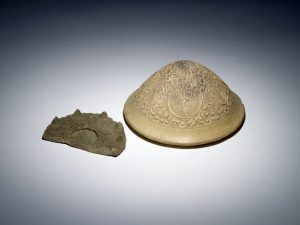
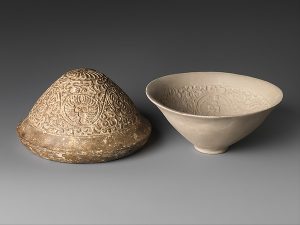
China, Northern Song dynasty (960–1127)
Stoneware; Diam. 5 1/2 in. (14 cm)
The Metropolitan Museum of Art, New York, Gift of C. T. Loo, 1916 (16.149.1)
http://www.metmuseum.org/Collections/search-the-collections/49202
Celadon Ware :
Celadon is a term used to describe several types of Chinese stoneware and porcelain, as well a ceramics from other countries, notably from Korea and Japan. The term is a imprecise one, applying to various types of green glazed ceramics, but not all ceramics with green glazes, there are several wares that have a green glaze that are not refereed to as celadon. For example Green Jun and Ge Ware. For this reason there has been a move to try to clarify the situation by using the term `Green Ware`. But for now Celadon is a more familiar and therefore useful term. The origins of the term Celadon are not clear, one theory is that the term first appeared in France in the 17th century and that it is named after the shepherd Celadon in Honoré d`Urfé`s French pastoral romance, L`Astrée (1627), who wore pale green ribbons. (D`Urfe, in turn, borrowed his character from Ovid`s Metamorphoses.) Another theory is that the term is a corruption of the name of Saladin, the Ayyubid Sultan, who in 1171 sent forty pieces of the ceramic to Nur ad-Din, Sultan of Syria. Yet a third theory is that the word derives from the Sanskrit sila and dhara, which mean “stone” and “green” respectively. Celadon ware originated in Zhejiang Province in the Eastern Han Dynasty, however green monochrome glazes can be found on stoneware much before that date. Zhejiang is were the famous Longquan Celadons were made but Celadon wares were also produced at Jiangsu, Hubei, Hunan and Jiangxi. The production of Celadon Ware required a reducing atmosphere of around 1300 degrees C., the colouring agent was a mixture of iron oxide and titanium. The glaze was applied very thickly, and was full of tiny bubbles which defuse the light giving the appearance of richness and softness.

